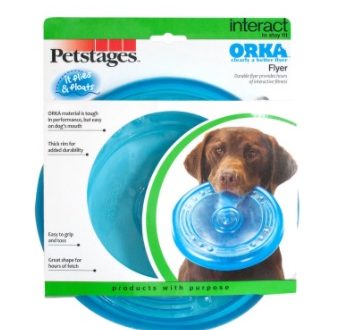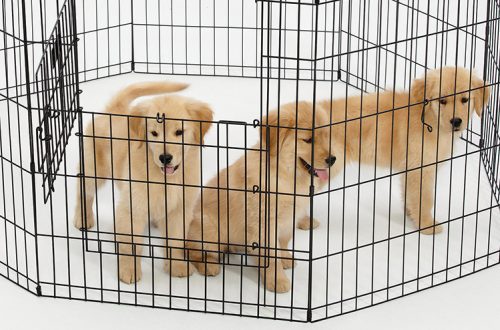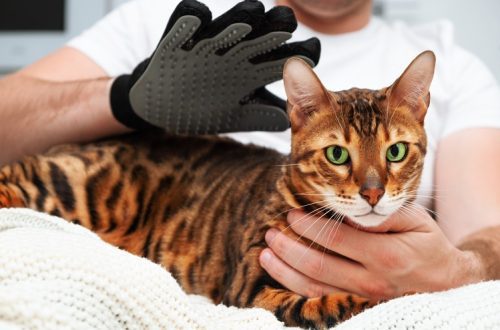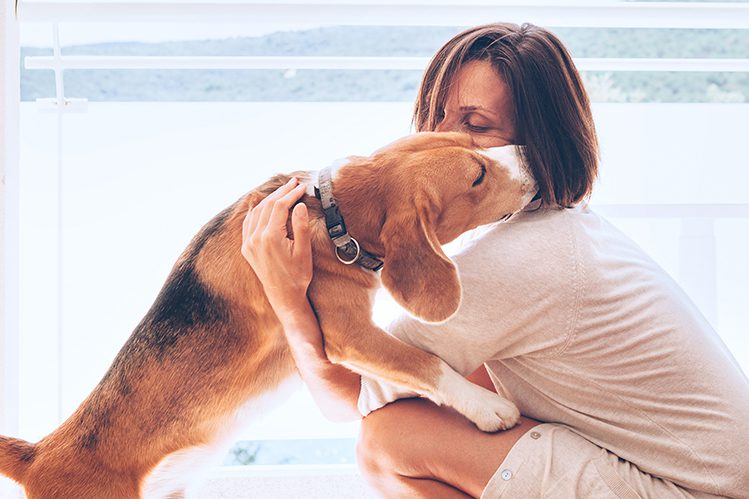
How to build boundaries in communication with a puppy?
The appearance of a puppy in the house is a joyful event. But raising a pet is not the easiest thing to do, especially for a beginner. It is important to correctly set the boundaries in communication, explain to the puppy what can and cannot be done, and adhere to these rules in the future. The sooner you start working on your pet’s behavior, the better the results will be.
Education from the first days in the house
Puppy education begins from the first minutes of the pet’s stay in a new home. Usually a puppy is purchased at about two months of age. After the appearance of a young pet in the house, there will be about three weeks of quarantine and gradual accustoming to light ammunition. It is important that the floor in the house is not slippery, otherwise it will be uncomfortable and even dangerous for the puppy to walk around the house.
Give the new family member time to settle in and explore the house. Be sure to keep an eye on your puppy. In the first few days, it is highly desirable to mess around with the puppy on the floor, play, show the puppy boundaries.
Не делайте щенку скидок на то, что он еще маленький. Воспитывайте и дисциплинируйте щенка сразу же. Это гораздо проще, чем спустя несколько месяцев начать коррекцию поведения щенка, урезонивать избалованного сорванца. Сразу расставляйте акценты: сюда идти нельзя, а здесь находится место для сна и его можно изучить, тут переноска для щенка, ее можно как следует обнюхать, а здесь плита — опасное место, к ней подходить не надо.
Маленькие щенки только кажутся несмышленышами. На самом деле, они все понимают и запоминают, учатся под вашим руководством. Конечно, ваши требования должны соответствовать возрастным возможностям щенка. Ни одна, даже самая умная собака не сможет продемонстрировать выдержку или явить чудеса апортировки в три месяца.
Чем чаще вы проводите время дома со щенком, тем скорее выстраивается и закрепляется система границ в ваших взаимоотношениях. Когда вы с питомцем часто общаетесь, он быстрее запоминает, что можно, а что нельзя делать. Если вас часто нет дома, выстраивать такую систему отношений сложнее.
Be firm. If the pet is not allowed in this room, then it is impossible always, without exception. But if your pet does something right, be sure to praise him for obedience and good behavior, because he tries so hard! Firmness and consistency in assessments will help the pet figure out when he is doing the right thing and when he is showing undesirable behavior.
Persistence is your main assistant. It disciplines, sets the pattern of good puppy behavior. Establish routines that your mentee can follow to better understand the world around you and your communication. Try to be constant in everything. If you and your pet play frisbee in the park every few days, keep this tradition alive. If you repeat learned commands in the evenings, make such a small activity at the end of the day a regular one.

- No rudeness and coercion!
Do not overdo it with strictness in raising a puppy. Remember that the dog does not need a dominant overseer, but a leader, an older comrade, on whom you can always rely. Rough treatment, raising your voice, swearing will only intimidate the pet, make you treat you with distrust. The basic principle of education remains ignoring the puppy’s unwanted behavior and encouraging the right actions.
Общение хозяина с питомцем должно быть уверенным, в меру строгим, но добрым и искренним. Грубой силой и принуждением вы не сможете приучить щенка к дисциплине.
- Relax and connect.
Что делать, если щенок не позволяет почистить себе уши, осмотреть зубы, вычесать себя? По возможности постарайтесь приучать щенка к уходовым процедурам с первых дней в новом доме, чтобы они стали для него привычным ритуалом. В детстве такие процедуры могут быть символическими. Например, вам необязательно тщательно вычесывать малыша, но вы можете одной рукой гладить питомца, а другой — аккуратно водить по его шерстке расческой. Разучите команду «Зубы!», это поможет вам в любое время без проблем осматривать ротовую полость питомца.
Try to make grooming an element of your communication. Praise, stroke, encourage with treats the readiness of the pet to endure hygienic manipulations. If you start combing the puppy, and he suddenly began to break out, stop grooming. Calm down yourself first. Let the pet feel how confident and serene you are. When the pet calms down, continue combing.
Try to carry out procedures that are unpleasant for the puppy before something pleasant and long-awaited. Teach from childhood to both bathing and cleaning your ears. Perform such manipulations, for example, before dinner. The pet will behave better if he is sure that after leaving he will have an evening meal.
- Personal boundaries of the owner and pet.
The owner is the absolute leader in communicating with the pet, but their relationship must be built on trust and mutual respect. Dogs of all ages also have their own personal boundaries. Do not violate these boundaries and do not allow others to violate them. For example, stroking your pet, especially if your four-legged friend turns away and avoids contact in every possible way.
Most dogs are wary of cameras – unfamiliar objects. When taking a photo for memory, attract the puppy’s attention with a treat or a toy, try to make the photo not disturbing, but comfortable for the pet.
When interacting with your pet, do not avoid eye contact. Look into the puppy’s eyes confidently, directly, kindly. Remember that you are the leader.
Dogs by nature tend to try to take a leadership position. Be prepared for the fact that the first creeps from the side of the puppy may begin as early as one and a half to two months. Crisis moments will be in six months and in one year. But the desire to take a leadership position can manifest itself more than once during the life of a pet. Be firm in your requirements for a pet, do not let the little tailed varmint boss you around. Your main assistants are kindness, confidence, calmness.
If the puppy indulges, does not obey in any way, you will have to raise your voice at him. Under no circumstances should you shout. Remain calm and gradually raise your voice if the pet does not understand in an amicable way. If the pet continues to indulge, try to growl loudly and pull the puppy by the withers. This should work, because this is how we imitate the behavior of the mother dog.
- Study your pet’s temperament to understand its desires and habits.
Don’t let your puppy cross your boundaries. If you work from home, teach your pet not to disturb you. Let him play in another room or next to you, but without drawing too much attention to himself. When you are busy and the puppy is distracting you, ignore these attempts to attract attention, you can command “No!” If the unwanted behavior continues, switch your pet’s attention to something else. Give your friend one of their favorite toys to play on their own and get on with your day.
The puppy should have a variety of toys for independent play, and there should be as many of them as possible. These can be balls, a variety of toys for chewing, toys for filling treats. Let the pet learn from an early age to occupy himself and not be naughty in your absence.
- Don’t forget to play together. Even training and learning commands can be done in a fun way. There should always be room for play and fun when interacting with a puppy.
Если щенок подошел и спокойно улегся рядом с вами, его можно погладить, можно поговорить с вашим подопечным, а можно просто посидеть в тишине. Это тоже важная часть общения!
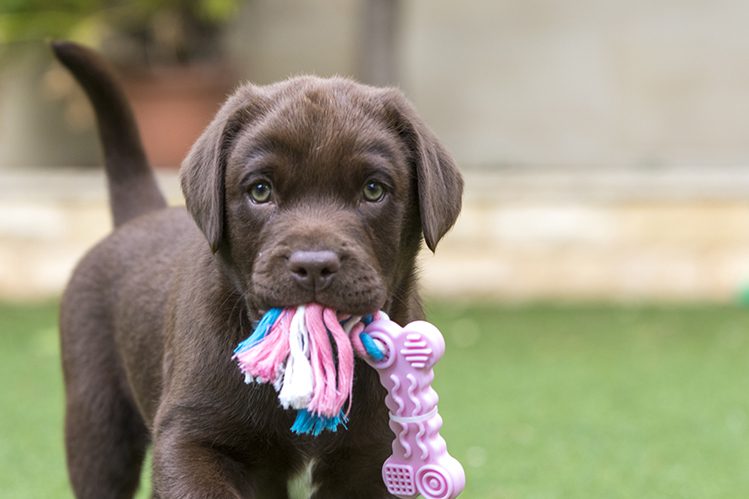
The most important thing in communicating with your four-legged friend is to engage in it, support the development of the pet by learning commands, games, and training. Familiarize yourself with the specialized literature, this will help you create a system of knowledge about raising a dog. And remember that in relation to pets, not only borders are important, but also love, trust, joint joyful moments. We wish you mutual understanding with your pets!



